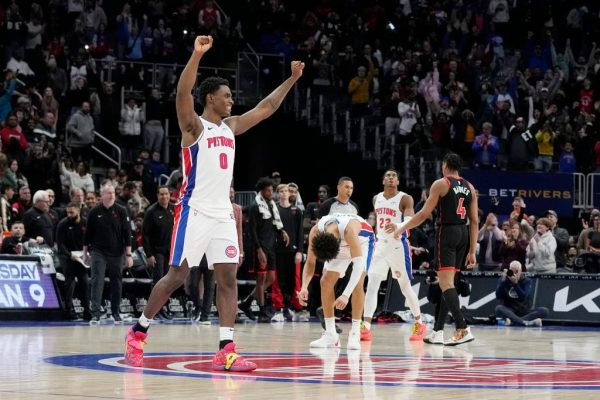The Hawkeye Sports Outlet: How have performance enhancing drugs changed sports?
The Hawkeye Sports Outlet: Your home for sports opinion and commentary
LeBron James, Michael Jordan, Tiger Woods, Wayne Gretzky, Babe Ruth – these are some of the greatest players of all time in their respective sports. Nowadays, all athletes strive to be like one of these players. Everyone wants to be the greatest of all time in what they do, and most of these players will do anything to reach their goals, even if that means cheating. As time has passed, Performance Enhancing Drugs (PEDs) have become more and more accessible and versatile, leading to increased use of performance enhancing substances within many, if not all sports. Whether it’s spider tack, “juice,” or anything in between, it will guarantee better performance, quicker healing, and more within the sport, allowing for an unfair advantage against other players. Although this may seem desirable to some, the consequences of these actions may permanently destroy one’s life sooner or later after the initial use.
Performance Enhancing Drugs have consistently damaged and ruined the lives and reputations of athletes worldwide. A prime example of this occurred with former Major League Baseball superstar Chris Davis. He tested positive for performance enhancing drugs after having multiple seasons with more than 30 home runs, in one of which he had 53 as well as 138 RBIs, and a 1.004 OPS, which is insanely difficult to accomplish in today’s game. After testing positive for Amphetamine, a type of PED, his stats, as well as his reputation in the baseball industry, plummeted significantly, leading to Davis hitting a measly 50% fewer home runs and leading the league in strikeouts in two consecutive seasons. Another prime example of this is seen with former NBA player Tyreke Evans. In the 2009-10 NBA season, Evans averaged approximately 20 points, 6 assists, and 5 rebounds per game, leading to him winning the league’s Rookie of the Year award, a highly-prestigious honor on numerous levels. In 2019, Evans’s points-per-game dropped by 50%, and he sadly resorted to the use of performance enhancing substances. He tested positive for such in May of 2019 and was then suspended from the NBA indefinitely. He easily could have played many more years in the NBA as an above-average role player, but he decided that wasn’t good enough and now is playing for the Puerto Rican team Indios de Mayaguez.
With all of these sports, their punishments vary in one way or another. While most of these sports organizations don’t publicly state their official punishments, we need to shed some light on them to deter athletes from taking substances and inadvertently ruining or ending their careers. To start, According to the MLB rules, a positive test of PEDs results in a 50-day suspension with no pay, but if it happens a second time, it is now a 100-game suspension without pay. In the NFL, the punishment ranged from simply having to take a course regarding drug use and safety, all the way up to a season-long suspension. In the NBA, the first offense is a 20-game suspension without pay, the second is 45 games, and any more can result in a season-long ban or expulsion from the league, though if the usage is extreme, these punishments may vary. Lastly, in the NHL, the first positive test leads to a 20-game suspension with no pay. A second positive test results in a 60-game suspension without pay, and if someone tests positive for a third time, it results in a lifetime ban. All of these punishments are life-changing and will ruin one’s life while also set unrealistic expectations for what an athlete should look like and play like. Hopefully these punishments, alongside the stories of other athletes who set poor precedents, will deter you and any other future athletes from embarking on this dangerous road.

Hi, my name is Max Melamed and I am a Managing Editor for The Hawkeye. I am in my senior year and this is my third year on staff. Outside of the Hawkeye,...









